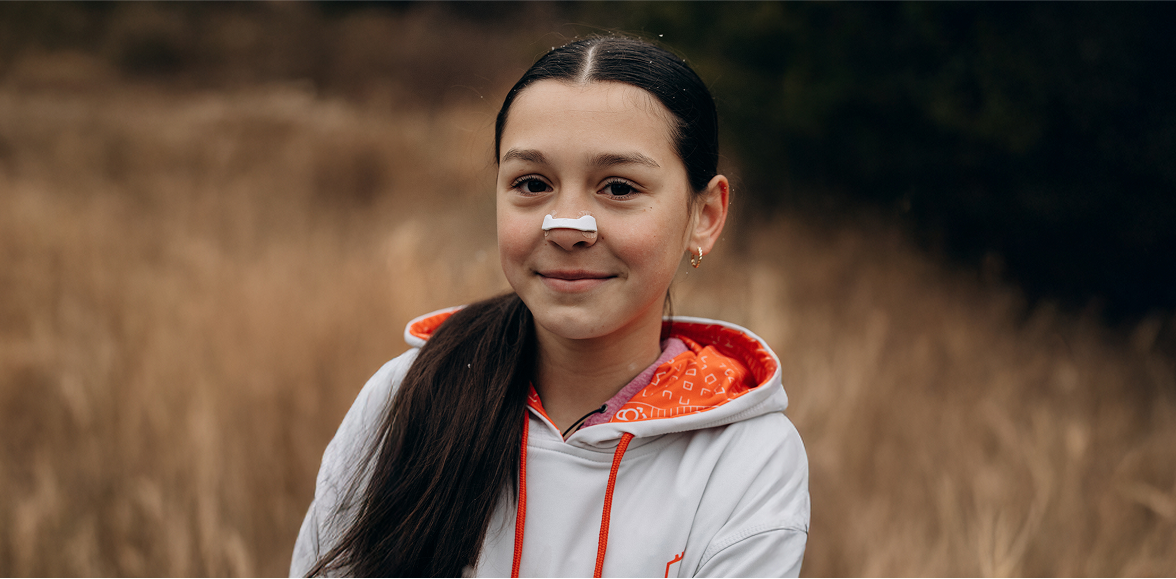Why Breathing Techniques Matter for Kids
Breathing may seem automatic, but how kids breathe—especially if they breathe through the nose vs. the mouth—can impact sleep, focus, jaw development, and even long-term health. Nasal breathing helps filter, warm, and humidify the air before it enters the lungs, which makes it the best path for growing bodies.
When kids are stressed, congested, or forming habits like mouth breathing, short-term issues like sleep problems and long-term concerns like poor jaw development can follow. That’s where fun, simple breathing exercises come in.
How to Introduce Breathing Practice to Kids
Before jumping into exercises, here’s how to make breathwork fun:
- Make it visual: Use toys, feathers, or pinwheels to show airflow.
- Keep it short: 2–3 minutes is enough to start.
- Pair it with routine: Add it to bedtime, after-school wind-down, or even toothbrushing time.
6 Fun Breathing Techniques for Kids
 These exercises are designed to be light-hearted, visual, and easy to follow. They support nasal breathing and help kids develop better breath awareness.
These exercises are designed to be light-hearted, visual, and easy to follow. They support nasal breathing and help kids develop better breath awareness.
How it works:
- Have your child lie on their back with a small stuffed animal on their belly.
- Ask them to breathe in slowly through their nose and make the bear rise.
- Then breathe out and watch it fall.
Builds awareness of diaphragmatic (belly) breathing.
2. Pinwheel Breaths
How it works:
- Use a pinwheel or dandelion.
- Inhale through the nose, exhale slowly through the mouth to spin the pinwheel.
Great for calm, controlled exhales and visual feedback.
3. Bunny Breaths
How it works:
- Take 3 short sniffs through the nose (like a bunny).
- Then exhale one long breath through the nose.
Helps reset focus and shift from mouth to nose breathing in a fun way.
4. Breathing Buddies (With Hands)
How it works:
- Have your child trace their hand with one finger.
- Inhale through the nose while going up a finger, exhale through the nose while going down.
Promotes calm and concentration—great before bedtime or school.
5. Snake Breaths
How it works:
- Inhale through the nose.
- Exhale slowly with a hissing “sssssss” sound, like a snake.
Builds breath control and strengthens nasal exhalation.
6. Flower & Candle
How it works:
- Pretend one hand is a flower, the other a candle.
- Smell the flower (inhale through the nose), blow the candle gently (exhale through the nose).
Combines imaginative play with focused breathing
When to Practice These Techniques
 You don’t need a yoga mat or a quiet room. Use these techniques:
You don’t need a yoga mat or a quiet room. Use these techniques:
- Before school to reduce anxiety
- After a tantrum or meltdown
- At bedtime to promote calm
- When congested to encourage nasal airflow
They can also be great tools during recovery from colds or congestion to help kids reconnect with nose breathing once they’re feeling better.
Encouraging Healthy Nasal Breathing Habits
In addition to exercises, here’s how to support nose breathing every day:
- Keep nasal passages clear using saline spray and humidifiers.
- Address allergies or congestion early with guidance from your pediatrician or ENT.
- Limit screen time that encourages slouching and poor posture (which affects breathing).
- Monitor for signs of mouth breathing during sleep.
If you're unsure whether your child is struggling with chronic mouth breathing or congestion-related habits, consult a pediatrician or airway-focused dentist.
Breathing Better Starts Early
 These simple exercises aren’t just calming tools—they’re the first step toward developing lifelong, healthy breathing habits. The earlier kids build nasal breathing awareness, the better for their energy, mood, focus, and even dental and facial development.
These simple exercises aren’t just calming tools—they’re the first step toward developing lifelong, healthy breathing habits. The earlier kids build nasal breathing awareness, the better for their energy, mood, focus, and even dental and facial development.
Even just 2 minutes a day of playful breathing practice can make a difference. Try a few favorites with your child, make it part of your wind-down time, and notice the shift in how they rest, focus, and feel.




